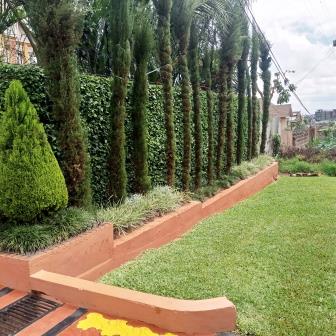You can cannot procrastinate forever. It comes a time when you have to put hoe to ground and make that garden happen. If this is the time for you, read on..
Landscaping and gardening in Nairobi, Kenya’s bustling capital city, can be a rewarding and fulfilling experience, even if you’re on a budget. You can transform your outdoor space into a beautiful garden oasis with a little creativity, planning, and knowledge about suitable plants and landscaping styles. This article will provide practical tips and suggestions on how to garden in Nairobi on a budget, including the use of different landscaping styles and the selection of affordable yet stunning plants. Additionally, explore how Crystal Gardens, a leading gardening service provider in Nairobi, can assist you with your garden needs.
Understanding Gardening in Nairobi
Nairobi’s climate falls within the subtropical highland zone, characterized by mild temperatures and two rainy seasons. This favorable climate provides ample opportunities for gardening and landscaping. Before getting to gardening on a budget, it’s essential to assess your garden’s size, sunlight exposure, soil quality, and drainage. Understanding these factors will help you make informed decisions when selecting plants and planning your landscape
Landscaping in Nairobi on a Budget
a. Start with a Plan: Planning your garden’s layout is crucial to avoid unnecessary expenses. Sketch out your garden space and consider factors such as walkways, seating areas, and focal points. A well-thought-out plan will guide your budget-friendly landscaping decisions.
Wondering what a focal point is? Well, this feature in the garden attracts the most attention. It could be a tree, a unique plant, a water fountain, or a sculpture.
b. Repurpose and Upcycle:
Look for creative ways to reuse materials you already have. Repurposing old containers as planters, using discarded tires for raised beds, or incorporating broken tiles into a mosaic pathway are all cost-effective ways to enhance your garden’s aesthetic appeal.
c. Use Gravel and Mulch:
Gravel and mulch are affordable materials that can improve the overall look of your garden while minimizing maintenance needs. Gravel paths can add a touch of elegance while mulching your flower beds helps retain moisture and suppresses weed growth.
d. Go for Native Plants:
Native plants are well-adapted to Nairobi’s climate, making them an ideal choice for a budget-friendly garden. These plants require less water and maintenance, reducing your overall gardening costs. Some popular native plants include African daisies, flame lilies, and Kenya roses. e. Create Vertical Gardens: Vertical gardens are an excellent way to maximize space in small gardens. Utilize walls or fences to install vertical planters, hanging baskets, or trellises. These structures not only add visual interest but also provide additional growing space for herbs, vegetables, or flowering vines
Affordable Plant Choices
a. Herbs and Vegetables:
Growing your own herbs and vegetables is not only cost-effective but also rewarding. Nairobi’s climate is conducive to a variety of edible plants, including tomatoes, spinach, kale, parsley, basil, and thyme. Start small with a few pots or dedicate a section of your garden to a vegetable patch.
b. Ornamental Grasses:
Ornamental grasses are a great choice for adding texture and movement to your garden. They require minimal maintenance and come in a wide range of sizes, colors, and shapes. Examples of affordable ornamental grasses suitable for Nairobi gardens include pampas grass, fountain grass, and zebra grass. c. Succulents and Cacti: Succulents and cacti are drought-tolerant plants that thrive in Nairobi’s climate. They come in various shapes, sizes, and colors, making them an attractive addition to any garden. Succulents like jade plants, aloe vera, and echeveria are low-maintenance options that add beauty to your outdoor space.
c) Succulents to the rescue
Easier to care for and easier to propagate too. From one succulent, you can easily get a whole plantation of plants. With most succulents, you simply break them off and inset into the ground. Succulents like echeverias self propagate. Why not make a succulent garden as your special feature instead of rock garden or water feature?


Leave a Reply